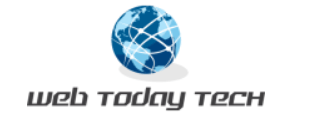This SEO Checklist for Web Developers in 2020 will help you stay on top of the latest SEO practices. Following these best practices will help you build a better website, increase your website’s functionality, and stay ahead of competitors in the SEO space. These best practices will also help you comply with Google’s Webmaster guidelines and November Core Updates. If you follow them, you’ll be well on your way to becoming an SEO expert!
Content optimization
It is important to implement an SEO strategy for your website. Google uses on-page and technical SEO factors to determine how to rank your web pages. The more effective your content is, the higher your ranking will be. You should also monitor the organic traffic coming to your site to improve your SEO. Ultimately, your goal should be to rank highly for your target keywords. Here’s a checklist to keep in mind when developing a website:
Optimize subheadings. Subheadings should be descriptive and include relevant keywords. Use anchor links to optimize these subheadings. Use content optimization software to automate this process. Free tools include Google Search Console, Siteliner, and Screaming Frog. Each tool can crawl a website for errors and duplicate content, and some offer more advanced functionality. Regardless of your level of expertise, these tools will make the process easier.
Use canonical tags.
Don’t duplicate subheadings and meta tags. Duplicate content is bad for ranking because Google must decide which version is best. In addition, duplicate content will be mistaken for spam. A canonical tag is a simple way to avoid this problem. Next time you’re developing a website, make sure to implement search engine intent. The future of web development will be determined by search engine intent, which is the goal of all web developers.
Use H6 tags.
H6 tags are used for CSS purposes and should be included in the code and content of your website. Old-school methods of latent semantic indexing are obsolete. The body copy is the largest block of indexable content, and it should contain focused keywords that tie into context. By utilizing H6 tags, you can create an SEO strategy that will maximize your website’s visibility. Your content should be well optimized and help you rank higher on Google.
Image optimization
Images play an important role in attracting visitors and improving your rankings in search engines. Images related to keywords can be displayed above the primary search results and in the knowledge graph. SEO-friendly images can improve the user experience and page load time. Additionally, they help your site improve speed, performance, and accessibility. Image optimization can increase the amount of organic traffic your website receives. Here are some tips for optimizing your images:
Use alt attributes for your images.
You don’t have to add text to images, but this is required to comply with the W3C. Make sure your alt attributes are relevant and contain your main keyword. Including alt attributes helps search engines better understand your images, and it helps users who can’t see them. Image optimization is also important for ensuring your website gets a top SERP spot.
Optimize image titles.
The title of an image is a key element for search. It must contain the main keyword in the title. Use unique images in your SEO strategy to improve your ranking. Moreover, you should provide a descriptive title for your images. A compelling title can help your visitors remember your website. By making it easy to read and understand, your content will be indexed by Google.
Use tools and plugins.
You can get your hands on the ultimate SEO checklist for web developers in 2022. It covers all the important areas of SEO and can be downloaded and printed out. For your next project, make sure to use this checklist to stay ahead of your competitors. Also, make sure to comply with Google’s November Core updates and Webmaster guidelines. This will help your website achieve top rankings.
Structured data markup
Using structured data markup for websites helps search engines better understand the content of a website. This results in higher click-through rates and increased website traffic. Most contemporary websites utilize JavaScript and HTML5 to display dynamic content. This new feature allows the search engines to access this information easily and ensure that it is available for everyone. However, most local businesses find it difficult to implement. Fortunately, Google offers free tools and guidelines to help developers use structured data effectively.
In 2022, a lot will be riding on structured data. Google will continue to prioritize it in its search algorithm. Google will be more dependent on structured data as the internet becomes bigger and more complex. Its limited resources will only allow it to serve the most relevant links, so structured data will help them fulfill their mission more effectively. But why should you care about structured data? For starters, it will improve your search engine optimization.
Search engines will need structured data to better understand the content of your website. This helps them categorize and display your site in rich results, which appear above organic search results. Rich results have higher click-through rates and increase sales. So, it is essential to take advantage of these opportunities. The sooner you start using structured data, the better your website will rank on search results. With these improvements, you can expect your website to gain a lot of traffic and revenue.
You can use Google’s email markup tester to test your emails for Structured Data. This tool lets you input the Markup code and checks if it conforms to standard specifications. It shows you the characteristics of each object and highlights errors if it is invalid. So, the benefits of structured data markup for web developers in 2022 are numerous. However, you need to be prepared to invest some time and money to learn how to use this new feature.
Link-building techniques
Regardless of what changes the Google algorithm makes, link-building techniques will remain crucial for your website. In addition to boosting rankings, link building techniques can dramatically increase traffic to your website. Here are some techniques to consider in the coming years. These techniques are self-promotional, which is one reason why they haven’t been replaced by the other SEO techniques. Neil Patel, Ahrefs, and link assistant are three of the most popular tools for link building.
Guest blogging:
Creating guest blog content is an important aspect of link building. In the past, guest blogging was commonly done by marketers to get links by using keyword-rich anchor texts. Today, however, this method focuses on external content on relevant blogs. In other words, guest blogging focuses on audience engagement. If your content is valuable to readers, then it is more likely to be shared on other websites.
Anchor text:
Using anchor text that is relevant to your website is vital. Otherwise, Google will treat your link as spam and penalize your website. When promoting your website on social media, you should use “no follow” links, which tells search engine bots that it isn’t an endorsement, but simply tells them that it isn’t. This practice will improve your website’s search results and will help you avoid spamming.
Infographics:
Visual content will continue to be crucial for your website. A good infographic on a niche topic can help you boost your content’s quality and attract a wider audience. Infographics, meanwhile, can also be effective when used for SEO. People love infographics, and they’re far more likely to read the whole thing than text. In addition, interactive elements can improve your website’s user experience. Publish stats on your site to boost links and increase visibility.
Keyword research
Keyword research is a vital element of any online marketing campaign. By monitoring competitor keywords and brand mentions, you can incorporate your keywords into content and site architecture. Various tools are available to aid in keyword research, including Google Ads Keyword Planner and ahref’s Keyword Explorer. You should also analyze the competition and determine how difficult it will be to rank for the keyword you’ve selected. To ensure you’re generating traffic, your keyword research should be focused on your unique selling proposition and the benefits of your offering.
A web developer can create a website based on the latest search engine optimization techniques and trends. The SEO checklist for web developers in 2022 should include SEO fundamentals, tools and plugins, and ensure that you are following Google’s November Core Updates. This way, your website will be able to rank well in Google. There’s also a section on the SEO checklist for web developers that will help them create the best possible website.
The most important part of keyword research is finding out how many people are looking for the term or phrase that your website is targeting. Google’s Keyword Planner is a great tool to do this, but you may need to register as an AdWord advertiser to access it. Several other online keyword research tools are available as well. Remember to check the search volume for the keywords you’re targeting, as this will indicate how many new users you can attract.
Another important element of your SEO checklist is planning your content. While it’s true that all content should be search engine optimized, blog posts are also a powerful way to generate non-branded keyword traffic. It’s critical to carefully plan your keyword strategy to make sure you’re generating as much traffic as possible with non-branded keywords. In addition to planning your content, the SEO checklist also covers keyword research. There are a number of sources available to help you research keywords and optimize your website for maximum exposure.



